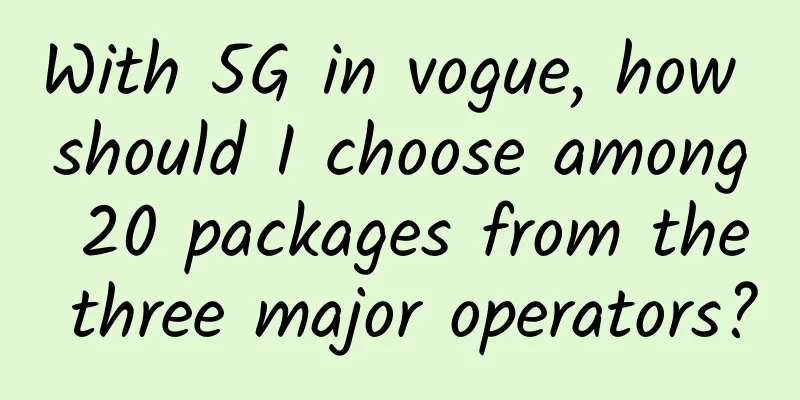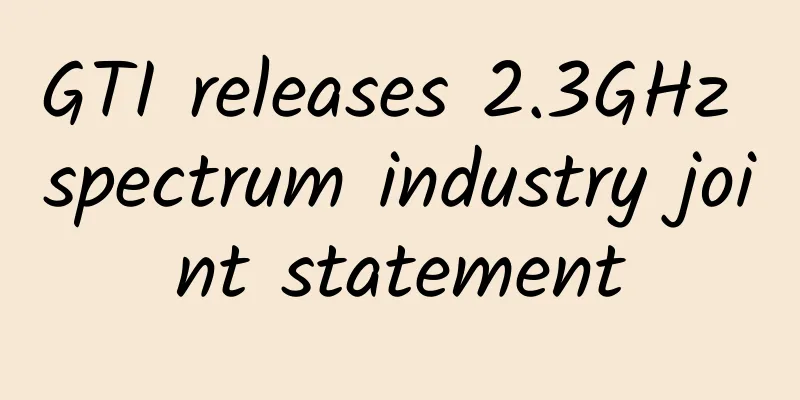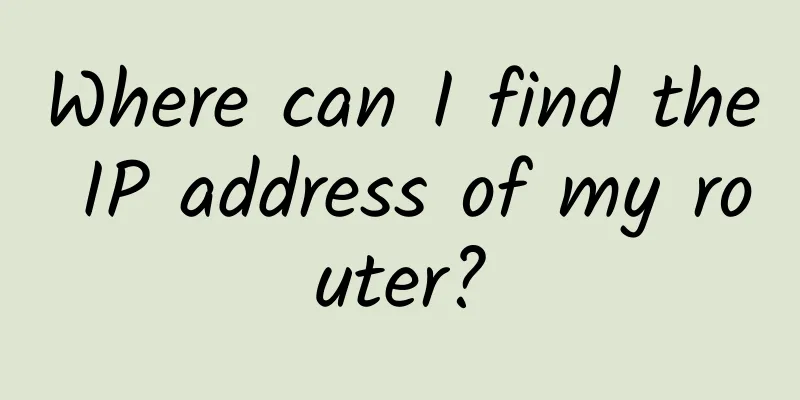With 5G in vogue, how should I choose among 20 packages from the three major operators?

|
2013 was the first year of 4G in China. Seven years later, in 2020, after accompanying us to experience all the conveniences and richness brought by information technology, 4G has gradually come to the end of its life. At present, the price of the most affordable 5G mobile phone has broken through 1,500 yuan, and is about to reach the 1,000 yuan mark; the most affordable 5G package is already below 130 yuan, and it is just around the corner to further reduce to double digits. Now, the price of 5G mobile phones and packages is no longer a pain point that prevents us from experiencing the most advanced network standards. The implementation of number portability allows us to finally choose the operator and package that suits us among the three operators without having to worry about the complexity and tediousness of changing mobile phone numbers. Which operator should we choose and which package should we choose when we are in different cities and have different traffic needs? I will try to answer this question from the perspectives of 5G network coverage and package rates. 5G network coverage The past 2019 was a year of steady progress in the deployment of 5G base stations, and many cities have basically achieved rough coverage of 5G networks. However, among the 337 cities at or above the prefecture level in the country, there are still objective differences in coverage rates among different cities. In order to ensure that the 5G packages we are excited to change can continue to allow us to experience the advantages of 5G stably, we'd better first make sure that the 5G network coverage in our permanent residence meets the requirements. There are two ways to check the 5G network coverage in your city: using the operator's mobile client or Baidu Maps. To ensure the accuracy and timeliness of the data, the following data comes from the operator's official client. According to the "2020 City Business Charm Ranking" released by the First-tier City Research Institute (the ranking can be obtained in the comments section), I will select cities in the middle of the ranking from first-tier cities, new first-tier cities, and second-tier to fifth-tier cities as objects, and compare the 5G network coverage of cities of different levels and different operators. These six cities are Shanghai among the first-tier cities, Nanjing, Jiangsu among the new first-tier cities, and Guiyang, Guizhou among the second-tier cities. Shangqiu, Henan, Shanwei, Guangdong, and Jiayuguan, Gansu represent the third-, fourth-, and fifth-tier cities respectively. As representatives of first-tier cities and new first-tier cities, Shanghai and Nanjing have basically achieved full coverage of the three operators in urban areas and rough coverage in suburbs. Under such network coverage, normal 5G network connection can basically be achieved. In Guiyang, Guizhou, a representative of second-tier cities, the three operators have only achieved 5G network coverage in urban areas, but China Mobile has a significant advantage in coverage density in urban areas and coverage in suburban areas, while China Telecom's urban coverage progress is relatively slow. With this coverage rate, we can basically experience high-speed connections on 5G networks within urban areas, but may fall back to 4G networks when leaving the city center. When it comes to third-tier cities and beyond, the 5G deployment of the three operators is still in the early preparation stage. Among the three cities of Shangqiu, Shanwei and Jiayuguan, only China Telecom has a very small number of 5G base stations in Shanwei, which may be more experimental in nature. From the above six coverage comparison charts, we can see that the coverage of 5G network gradually decreases as the size of the city decreases. In cities after the third tier, the deployment of 5G is still in the preparation stage. Therefore, consumers in first-tier, new first-tier and second-tier cities can start to try 5G, while consumers in third-tier and later cities can first understand the specific situation of 5G network coverage in their area before making a decision. Compare package rates1. Data traffic The implementation of number portability means that the choice of packages is no longer limited to a single operator. This has also indirectly promoted full competition in the industry and is conducive to reducing package charges. For us consumers, full competition is always good news. The 5G packages of the three major operators have similar rates, with multiple tiers ranging from 130 yuan to 600 yuan. The difference is that China Mobile and China Unicom offer 7 tiers, while China Telecom offers 6. China Mobile and Unicom also offer an additional 160 yuan package that includes 40GB of traffic and 300 or 700 minutes of calls. In other tiers of packages, the traffic amounts of the three major operators are also consistent. The three operators have basically the same charging standards for the traffic exceeding the package. China Mobile and China Unicom charge 3 yuan/GB for the traffic exceeding the package, while China Telecom is relatively more detailed, charging 3 yuan/GB for the excess part, but 0.3 yuan/MB for the part less than 100MB. 2. Voice call duration In terms of data traffic, the three operators' tariffs are basically the same, but in terms of voice calls, except for the highest-end 600-yuan package, the call duration of China Mobile's other packages is generally only about half of that of the other two. For example, in the 130-yuan package, China Unicom and China Telecom both provide 500 minutes of voice calls, while China Mobile only provides 200 minutes. For voice calls beyond the package, all three operators charge 0.15 yuan per minute, and the part less than one minute will be calculated as one minute. 3. Content outside the package More and more people have more than one mobile phone, and more and more people are starting to have smart watches. In order to meet everyone's independent networking needs for multiple devices, the three operators all support the activation of secondary cards. All three operators allow up to two secondary cards to be activated for each package. The secondary cards enjoy the same network speed as the primary card, and the price is also a uniform 10 yuan per card per month. It is worth noting that not all cities currently support eSIM secondary cards, so before activating an eSIM for your smartwatch, be sure to ask customer service about the local eSIM support situation. Therefore, the 5G package rates of the three major operators are generally comparable, with only slight differences in voice calls. Consumers with special needs for voice calls may need to spend more and buy higher-level packages if they choose China Mobile. SummarizeIn first-tier and new first-tier cities, the 5G network coverage of the three operators can meet the needs of daily use. China Mobile's coverage is relatively more comprehensive, but the voice call duration in the same level package is about half of that of the other two. Therefore, consumers in these areas can choose the packages of the three operators mainly based on their voice call needs. In second-tier cities, the network coverage of the three operators can only basically cover urban areas. Consumers should actually compare the 5G network coverage of the three operators to decide whether to start replacing 5G mobile phones and packages. Finally, the 5G construction of the three operators in third-tier and later cities is still in the preparation stage, and consumers in these areas do not need to switch to 5G packages for the time being. When we choose from the 20 5G packages of the three major operators, we need to focus on the 5G network coverage of each operator in the local city and our own requirements for the duration of voice calls to ensure that we can experience a stable and smooth 5G connection at an appropriate rate. Although the 3G era was just seven years ago, the era when people mainly read text and scrolled through pictures online seems unimaginable. In the 4G era, which is about to be handed over, we are used to making voice calls instead of phone calls to contact friends, watching short videos instead of reading news when we are bored, and we are used to data traffic that is faster than wireless networks, and we are also used to playing online games in the subway. In the next few years, 5G, which will take over the baton, may bring us more richness and convenience that are beyond our imagination now. Let us look forward to it together. |
<<: COVID-19 pandemic boosts 5G enterprise use cases, study finds
>>: CommScope launches new access point portfolio to accelerate enterprise-class Wi-Fi 6 adoption
Recommend
Explain RPC and HTTP in plain language
With the continuous development of enterprise IT ...
Pesyun: 188 yuan/month-8 cores/32GB memory/500G SSD/30M/Los Angeles & Portland data centers
Pesyun (Standard Interconnect) has launched the 2...
[Understand Routing in Seconds] Now that we have an IP address, is a MAC address still necessary?
I wonder if you are confused: Why do we need a MA...
CloudCone: Los Angeles VPS from $1.80/month, Cloud Server (SC2) from $1.65/month
CloudCone hasn't had a flash sale for a long ...
Inspur Networks launches smart AP to connect new wireless ecosystem
With the rapid development and popularization of ...
10gbiz New Year Promotion: Hong Kong/Los Angeles CN2 GIA line VPS 40% off $2.75/month, Bare Metal Server 58% off
10g.biz has launched its 2022 New Year event. In ...
5G and manufacturing: the missing link to drive Industry 4.0?
5G can help transform the manufacturing industry....
A brief discussion on the organizational structure design of data center operation and maintenance
A data center is a complex organization with many...
Five ministries and commissions issued the "Guidelines for the Construction of the National New Generation Artificial Intelligence Standard System"
Recently, the National Standardization Administra...
There are two important factors that affect network speed: network bandwidth and network latency!
With the popularization of the Internet, users pa...
[Black Friday] DMIT consumption rebate, 20% off Japan VPS, 50% free traffic in Hong Kong/Los Angeles
DMIT.io also launched a promotion during Black Fr...
CMIVPS: VPS hosting with 30% off annual payment and 20% off monthly payment, large bandwidth/direct connection in Hong Kong
CMIVPS released a new discount plan for blog read...
Why is your router's ability to penetrate walls poor?
1. Is it my fault that the signal is weak? Whethe...
5G will make your 4G mobile phone obsolete. How can you become a "pig" in the 5G trend?
[[223756]] According to Gartner data, the total s...
Why are operators competing to launch new 4G packages as 5G is the mainstream?
[[406115]] In 2021, when 5G is rapidly popularize...



![[cyberMonday] DediPath: VPS starts at $10 per year, dedicated server starts at $108/three months, 1Gbps unlimited traffic, multiple data centers in Los Angeles and other places](/upload/images/67cac00425403.webp)

![[6.18] UCloud Kuaijie cloud server starts from 5 yuan, COM domain name starts from 20 yuan, 100GB CDN traffic package starts from 1 yuan](/upload/images/67cac33114e29.webp)



